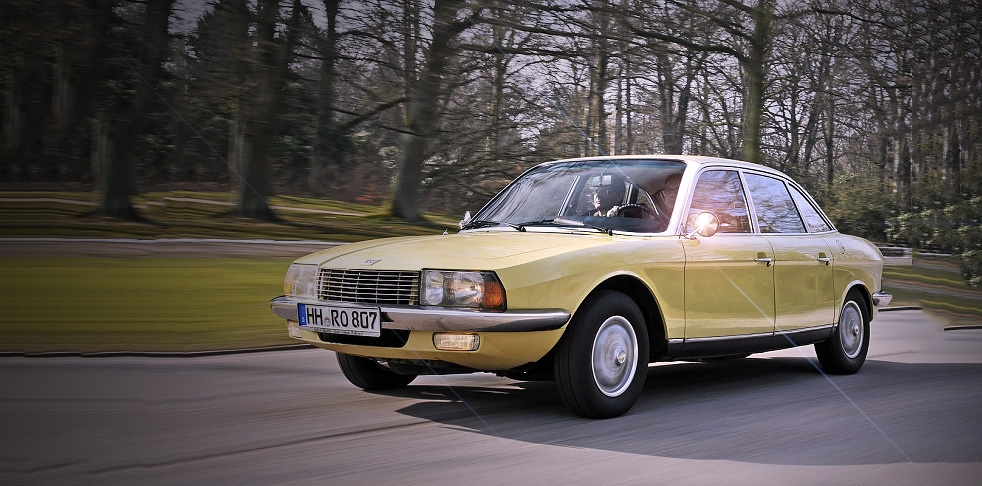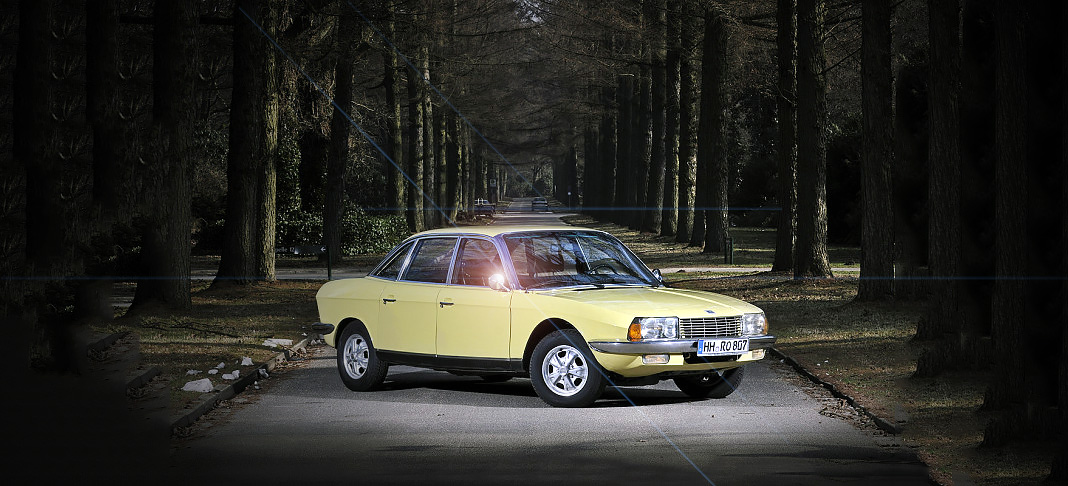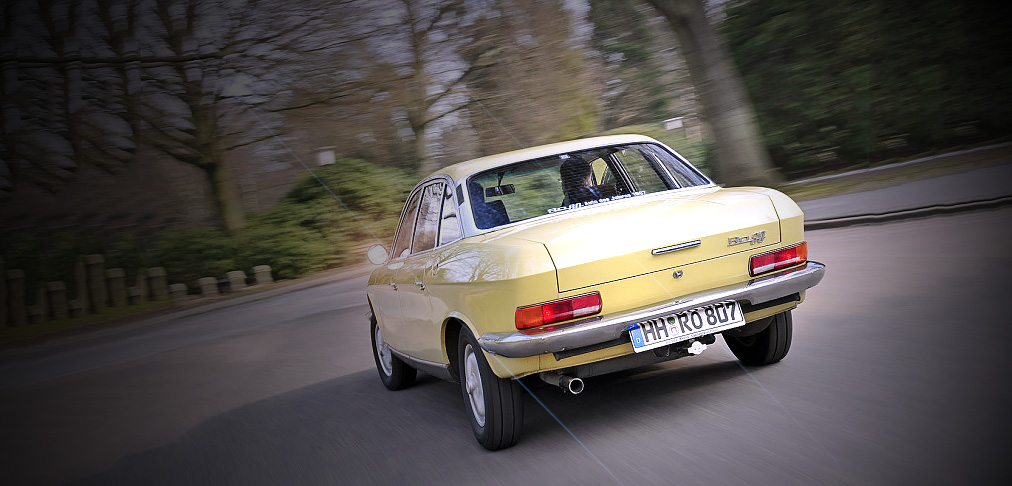
Taking a final spin – NSU Ro80. With rotary engines now headed the way of the Edsel, we look back at a revolutionary design that promised so much but never reached its potential. With Mazda ending production of its RX-8 sports car, it’s likely that 2012 will go down in the annals of automotive history as the last year of Felix Wankers rotary engine.
Acclaimed for its smoothness, compact dimensions and light weight, the early stigma of unreliability and its appetite for fuel thwarted attempts to introduce the motor to large scale production.
To its credit. Mazda faithfully persisted for 45 years, its first Wankel powered car – the Cosmo Sport – debuting in 1967. But it wasn’t the first manufacturer to use the Wankel rotary engine in a production car; that honour went to the small West German firm NSU, perhaps better known for its range of small motorcycles, which had been produced since 1901.

The father of the rotary design. Felix Wankel, had been hired by NSU as a consultant after the Second World War, but his concept for a production rotary engine in which both rotor and housing rotated around a central shaft – was modified into a stationary housing by Walter Frode.
Even without its Wankel engine, the Ro80 was eccentric. Its design was slippery for its time…
NSU’s head of research, making it a far more viable preposition for production. The resultant NSU Wankel Spider was shown at the Frankfurt International Auto Show in 1963. Open-topped, the Spider housed a single rotor, twin-plug engine with 498cc capacity and 36kW rating.
A less ambitious group might haw been thwarted by the issues that plagued the Spider – predominantly premature seal and rotor wear – but NSU had grander plans for a luxury sedan known internally as typ 80.
With a futuristic design by Claus Luthe (later charged with manslaughter over the death of a drug-addicted son), the typ 80 project had commenced in 1961 with the production version known as Ro80 (an amalgam of Rotary engine and typ 80) debuting at the 1967 Frankfurt Auto Show.
Even without its Wankel engine, the Ro80 was eccentric, its design was slippery for its time, with an initial drag coefficient of 0,355 (Cd or Cx).
It was essentially a clean sheet design for NSU and incorporated front-wheel drive, four-wheel independent suspension, power steering and four-wheel powered disc brakes, the fronts being mounted inboard. NSU’s choice of a three-speed semi automatic gearbox also differed from the norm, and was equipped with a torque converter, most likely to mask the inherent lack of torque from the latest version of the Wankel engine. The gearbox was made by Fichtel & Sachs – the same company that built the Sportomatic semi-auto found in contemporary Porsche 911s.
The engine was of twin-rotor, twin-spark design with peripheral porting. Each rotor had a nominal volume of 497cc for a total capacity of 994cc. With two Solex carburettors, the engine produced 85kW at 5500rpm and 158Nm at 4800rpm, competitive with 2.0-litre conventional piston engines of the rime.

There was no clutch pedal in the Ro80; gears were changed via an electric switch on the gear knob of the ‘H’ pattern shifter. A relatively spacious five-seat saloon, the Ro80 was much lauded for its smooth ride, both in terms of its plush, long’ travel suspension and lack of engine vibration.
Though it promised much, the reality was that underfunded NSU didn’t have the capacity to iron out the design flaws. Rotor tip wear remained a major concern and led to loss of power, smoky starting and excessive fuel and oil consumption, with emissions levels far higher than in a conventional engine. Inevitably, these motors had to be replaced, with some not even lasting 10.000 miles. NSU was generous with its warranty claims, but the further cash flow problems that created (and. as a result, the lack of demand in licensing the design out) saw Volkswagen buy out NSU in 1969. VW eventually merged Auto Union with the remains of NSU, creating Audi.
Custom kit – does it still run an NSU engine? Indeed it does. It even comes with the original toolkit essential for such unusual vehicle.
Double guns – the exhaust on the Ro80 one for each rotor – are kept separate.
Fire starter – the twin rotor Wankel in this Ro80 is one of the later single plug (per chamber) varieties. Mounted longitudinally. It sports a peripheral air Intake.
The last of the Ro80s built (37.398, it’s claimed) rolled out in 1977, externally similar to the original design – an indication of how advanced its styling was – but with a refined single-plug rotary under the bonnet Nevertheless, the damage had been done, and Mazda carried the Wankel torch alone.
The NSU Ro80 enjoys a cult following these days, particularly in Europe. Murray Mules, owner of this award-winning 1969 Australian-delivered Ro80, personifies the passion. I’ve owned 10 in my time ’ he explains. Three have been really good, but the other seven have been used mostly for parts. Call it insanity, but I love them”.
Originally dark green, the now white Ro80 is “one of either 164 or 192 Australian examples – the importer went bust in 1974 and there is some conjecture regarding how many actually came over”, and has been a long-term affair for Murray, who purchased it six years ago from Perth as a partly-finished project ‘It’s taken five of those years to get it to the state it is today” he explains. ‘Being an ex-mechanic.
At car shows it generates discussion. This generally commences with “What is it?”
I could fortunately do most of the work myself, and there is a spares network, particularly in Europe, that means! – can still get most of the bits and pieces. It’s been a steep learning curve.
The car was finished in late September 2012, and won ’Best rare marque’ and Best overall at the Shannons Motorfest in Canberra just prior to our photoshoot.
Stories abound of Ro80s being converted to eradicate those problematic engines. A Ford V4 is a popular choke in the UK, and logic dictates that Mazda’s 12A rotary is a popular choice too. “Yeah. Murray sighs. ‘I’ve heard it all. Fiat. Subaru’s flat-four. Audi Fox engines, the list goes on…”
This example retains an NSU Wankel engine, of the later, improved single-plug type with Haltech fuel injection and upgraded ignition, to ensure smoother running and better (though still average) fuel consumption. ’We struggle to see double figures in the old miles-per-gallon measurement!’ he laughs.
What drew him to the Ro80? It was simply something different, something ahead of its time, says Murray. It was technically advanced, with the box-section chassis making it feel quite safe on the road. The ZF power steering still has a lovely feel to it, yet enough assistance when you want it, and it rides very well while handling nicely. The engine is so smooth, but you have to get it up and running. Below about 3000rpm it is a bit cantankerous. At higher revs it’s still fuss free, to the point where you don’t notice how high the engine is revving.’ Wisely. Murray has fitted a rev limiter.
Murray doesn’t drive the car too often, saving it for car shows and other events where it garners attention and generates discussions. These generally commence with ‘What is it’? Or for those in the know. Does it still run an NSU engine?
Leather face – luxury dashboard. The Ro80 had an opulent thirst for fuel to go with it.
Space face NSU Ro80 was technically advanced for its time – with a design to match.
With perhaps only 20 usable examples remaining in Australia, those questions are inevitable, but they don’t dilute Murray’s enjoyment. And that is what owning such a rare, flawed, distinctive and technically appealing car should be all about.





